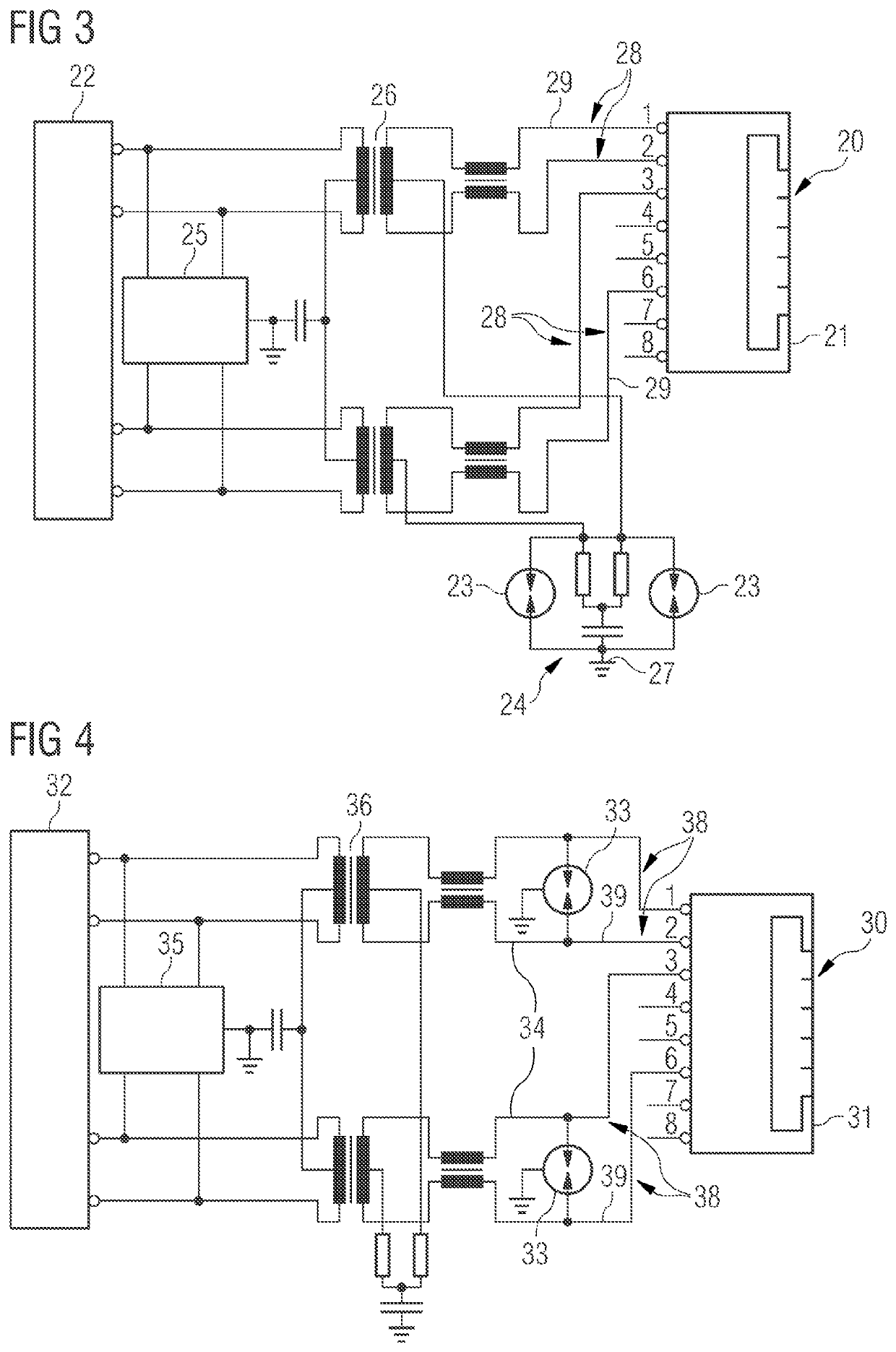Gas arrester
a gas arrester and gas technology, applied in the field of gas arresters, can solve the problems of data lines, large challenge to the manufacturers of protection elements, complex voltage and overcurrent, etc., and achieve the effect of reliable gas arrester
- Summary
- Abstract
- Description
- Claims
- Application Information
AI Technical Summary
Benefits of technology
Problems solved by technology
Method used
Image
Examples
Embodiment Construction
[0034]FIGS. 1a and 1b show conventional arresters 1 for protection against over-voltages. There are fundamentally two kinds of gas-filled arresters 1: two-electrode arresters (FIG. 1a) and three-electrode arresters (FIG. 1b).
[0035]The two-electrode arrester 1 shown in FIG. 1a comprises a first electrode and a second electrode 2, as well as a ceramic body 8 for isolation. The arrester 1 comprises a discharge region 7 to enable an electrical discharge between the electrodes 2 in the presence of an over-voltage. In the presence of an over-voltage, a discharge, in particular an arc discharge, should take place in the discharge region 7 between the electrodes 2. The discharge region 7 can be filled with a gas, in particular a noble gas.
[0036]An ignition aid 6 (for example, made of graphite) is provided in the discharge region 7 at an inner face of the ceramic body 8, and assists the development of a discharge when the arrester 1 is triggered. An activation material 5, for example, silica...
PUM
 Login to View More
Login to View More Abstract
Description
Claims
Application Information
 Login to View More
Login to View More - R&D
- Intellectual Property
- Life Sciences
- Materials
- Tech Scout
- Unparalleled Data Quality
- Higher Quality Content
- 60% Fewer Hallucinations
Browse by: Latest US Patents, China's latest patents, Technical Efficacy Thesaurus, Application Domain, Technology Topic, Popular Technical Reports.
© 2025 PatSnap. All rights reserved.Legal|Privacy policy|Modern Slavery Act Transparency Statement|Sitemap|About US| Contact US: help@patsnap.com



